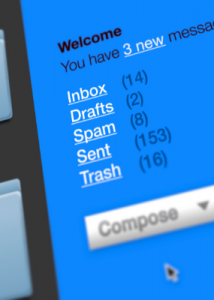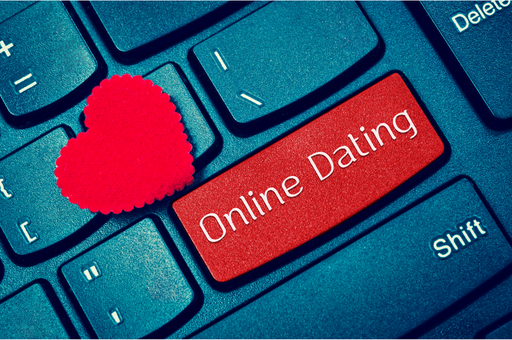
The Digital World
Updated: August 1, 2023
Much of what we engage with these days is digital. We file our tax returns online, look up our medical information through a patient portal, store our pictures, movies, and music digitally, keep important information in digital form on our computers or in the cloud, communicate, and shop on.
 The list of possible locations for important digital information, websites we use on a regular basis, online groups we are part of, streaming services we use, etc. is often much longer than we would expect. Even the number of usernames and passwords can be overwhelming.
The list of possible locations for important digital information, websites we use on a regular basis, online groups we are part of, streaming services we use, etc. is often much longer than we would expect. Even the number of usernames and passwords can be overwhelming.
It can be difficult enough to keep track of your own logins. Managing your loved one’s digital affairs after their death can be especially challenging. Depending on how well the information was organized, it could take months to years for you to sort it all out.
If you are fortunate, your loved one left a digital assets memorandum and access to a document or password manager with all of their usernames and passwords with their will. In this case, when you have to take charge of or discontinue certain websites, get their digital financial records, or stop services with automatic payments, you will hopefully have everything you need to do this. If not, there are places you may need to look.
There are a number of things to consider when deciding what to do with a loved one’s digital accounts after their death. One option is converting their social media account to a memorial page if they were on Facebook or Instagram. A more delicate decision is whether to use email and/or social media accounts to announce their death. Finally, there are steps needed to discontinue each of their accounts.
Your Loved One's Digital Files and Information
 These days our financial dealings, tax forms, insurance policies, and health information are likely to be in digital form in files that may be found on computers, smartphones, digital storage devices, websites, and in the cloud. Even money can be digital in the form of cryptocurrency.
These days our financial dealings, tax forms, insurance policies, and health information are likely to be in digital form in files that may be found on computers, smartphones, digital storage devices, websites, and in the cloud. Even money can be digital in the form of cryptocurrency.
While older adults may not be comfortable with technology, you will find that at least some of your loved one’s estate and business information will be stored in digital form. The Digital Estates section has detailed information about this information, how to find it, and how to deal with it.
Digital Announcements of Your Loved One's Passing
With so many people having smartphones, email, and social media accounts, it becomes possible to announce your loved one’s death to a significant number of family and friends online or by text. However, these notifications can be impersonal. It may be best to inform close family and friends in person or by phone where emotions can be shared and some comfort provided.
You or a designated immediate family member can create a text and/or an online death announcement, depending on preference and comfort level with texting, email, and social media. There are a number of considerations when deciding whether to use digital notifications to announce your loved one’s death to other family and friends.
There are advantages to using digital notifications.
- They can be a fast and efficient way to let many other family and friends know that your loved one has died.
- Social media notifications are most effective when your loved one had an account.
- This will allow you to reach their entire network of friends and family.
- It can be less emotionally draining than notifying everyone personally while you are beginning the grief process.
- An alternative is a phone chain, where you tell several close family and friends and ask them to begin to spread the news for you by contacting certain others.
 While most people have smartphones and email accounts, you will only be able to reach those with social media accounts using this method.
While most people have smartphones and email accounts, you will only be able to reach those with social media accounts using this method.
Consider whether digital announcements will be appropriate and effective.
- Are there enough people in your loved one’s social media networks to make it worthwhile?
- Do they check their texts, email, or postings often enough to be effective?
- Will they be receptive to a digital notification?
- These may not be true if your loved one was older, but you will need to make an individual decision for each person you want to contact online.
Which other family and friends do you want to limit notifications to?
- If you send or post funeral/viewing/memorial details, do you want to further limit notifications to only those you want to attend?
- Limiting notifications can be complicated with social media accounts.
- To limit the announcement you would need to send private messages to each individual, since a single post is available to anyone on your friends list.
- This can be done with an E-invitation.
If you choose personal digital notifications, you need to be sensitive and tactful.
- It is best to begin with a statement such as, “I’ve got sad news about the passing away of a member of my family” or use it as the Subject in an email.
- This may prepare the person for the news and/or give them the opportunity to postpone reading the news if they are not in a situation to deal with it.
- You might include an apology about notifying them in this manner.
- It is best to keep the message short with only basic facts.
- Avoid emotional statements, such as they will be missed or how much they were loved.
- Despite this, you will likely have a deluge of sympathetic responses.
If you are not their closest family member (i.e not a surviving spouse or child) allow that person to make the initial announcement before you spread the word to others.
Be specific about whether or not the notification can be shared or forwarded.
Texts, emails, and social media posts are less secure than a phone call.
Posting death announcements and funeral/memorial details on a public platform such as a mass emailing, general/status post on social media, or in the newspaper may be the only way to ensure everyone who needs to know has been informed.
- Make sure you have notified all close family and friends and waited at least one to two days to avoid them learning the news while browsing the internet.
- Be sure to specify all the details to avoid confusion. In general, a death and funeral/memorial announcement should at least include:
- The name of your loved one;
- The date of their passing;
- The date, time, and location of viewing, service, and/or burial; and
- Any specific details such as whether each event will be open to the public, reserved for family and close friends, or family members only.
- You may want to include the cause of death
- Unfortunately, making an announcement in a public space may result in unwanted responses and negative comments.
 In some cases, you may wish to include extra details in a public death announcement such as the surviving family members’ names, an individual photo, the deceased’s employer, or information on where memorial contributions can be made.
In some cases, you may wish to include extra details in a public death announcement such as the surviving family members’ names, an individual photo, the deceased’s employer, or information on where memorial contributions can be made.
Beyond the initial notification, you can use social media to provide additional information about your loved one to others.
- You can share positive memories, although avoid any that are too personal for security reasons.
- Upload appropriate pictures/videos.
- You can share their obituary, but avoid excessive details about their death.
Managing the Web
Most people have an online presence “or digital footprint” whether it’s email, Facebook, or other platforms. People buy, stream, store, and download content and data from any number of sites, most of whom have credit card, billing, and other personal information.
 When these accounts remain active and go unused after a person dies, the risk of identity theft, credit card fraud, continued automatic payments to subscriptions, and other related issues increases.
When these accounts remain active and go unused after a person dies, the risk of identity theft, credit card fraud, continued automatic payments to subscriptions, and other related issues increases.
Some sites such as Facebook and Gmail may allow a user to request options prior to death from the Settings or Inactive Account Manager menu. This could be deletion after death or naming of a legacy contact.
Apple’s latest iPhone software update has a Legacy Contact program that you can set up that allows you to designate someone to access your Apple account — your photos, notes, mail, etc.— after your death. Your chosen legacy contact will get an access key that is automatically stored in an encrypted location on your phone after your death certificate is uploaded to an Apple website and reviewed by Apple staff.
When a user does not do this, it is up to their heirs to contact the individual servers to close or alter these accounts. It is important to deal with all of the web services your loved one used as soon as possible.
If you know your loved one’s username and password, it would seem a simple matter to go to the site and close the account. However, the Terms of Service (TOS) agreement for most accounts stipulates that the account holder is the only approved user and federal privacy laws usually make it illegal for you to do so. While this is true while your loved one was alive, the legality of you doing this after their death is murky.
 There is a typical approach to canceling accounts, but every email provider and website have their own process, the details of which are usually found in the TOS agreement.
There is a typical approach to canceling accounts, but every email provider and website have their own process, the details of which are usually found in the TOS agreement.
- Most websites can be canceled from any computer if you know their username and password.
- If you don’t, try logging into their computer and finding the browser that may have their username and password saved on them. In many cases when you log into their accounts from their computer the username and password will auto-populate and allow you to access the account and modify or delete it. You will need to have their computer’s and/or smartphone’s PIN number if the device has one.
- If they have not saved this information and you share access to the account or have their devices and PIN numbers, try the ‘forgot username’ or ‘forgot password’ feature since you may be able to answer the personal questions. You may encounter the situation where an authorization code will be texted or emailed and will need access to their email or smartphone to receive them.
If you do not have their devices or this information, you may need to do an online search to figure out the steps you need to take.
- It usually involves contacting the provider and presenting them with proof of their death and of your identity. This could involve a forensic computing expert.
- Most providers will have a phone number to call somewhere on the site.
Resources
- Accountkiller – A searchable directory of links and directions to delete a wide range of web service accounts. Also offers assistance if you are having trouble closing the account.
- How To Close Online Accounts And Services When Someone Dies. everplans website. Provides step-by-step instructions on how to close more than 230 digital services.
- Just Delete Me – A searchable directory of links and directions to delete a wide range of web service accounts.
- 5 Tips for Announcing a Death on Social Media. Funeral Basics website. Accessed: August 1, 2023.
- Ganger B. How to Announce a Death on Social Media. Beyond the Dash website. Posted: January 6, 2021. Accessed: August 1, 2023.
- How to Announce a Loved One’s Death on Social Media. Seniors Guide website. Posted: October 25, 2019. Accessed: August 1, 2023.
- How to Create a Meaningful Memorial Website. WiX Blog website. Posted August 1, 2020. Accessed: August 1, 2023.
- How to Create an Online Memorial. Ever Loved website. Updated: June 23, 2022. Accessed: August 1, 2023.
- Meleen M. How to Write a Death Announcement on Facebook. lovetoknow website. Published: September 10, 2020. Accessed: August 1, 2023.
- Meleen M. Respectful Death Announcement Email Samples. lovetoknow website. Updated: April 22, 2023. Accessed: August 1, 2023.
- Mlot S. How to Prepare Your Digital Life for Your Death. PC Magazine website. Posted: June 27, 2023. Accessed: August 1, 2023.
- Prangley K, Brown Walsh S. Tips for Managing Digital Assets of a Deceased or Disabled Person. The American College of Trust and Estate Counsel website. Accessed: August 1, 2023.
- Solomon D. Announcing A Death Traditionally And With Social Media. Cake website. Updated: July 21, 2023. Accessed: August 1, 2023.
- Thapliyal A. How To Delete Online Accounts When Someone Dies. Tech Untold website. Updated: December 28, 2022. Accessed: August 1, 2023.
- Warr S. How to Create an Online Memorial for Loved Ones, People, & Pets. MyLife Jars website. Posted: November 5, 2021. Accessed: August 1, 2023.








